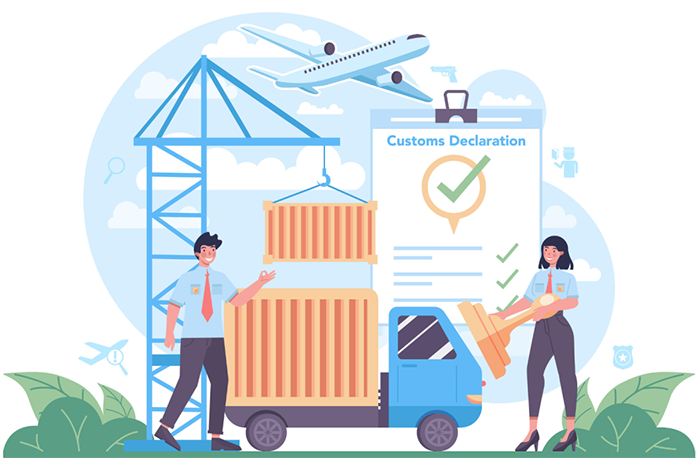Bonded warehousing and distribution play a crucial role in custom clearance services, offering businesses a strategic advantage in managing their inventory and distribution processes. By leveraging bonded warehouses, companies can store goods without immediate payment of import duties and taxes, facilitating smoother logistics operations.
Importance of Bonded Warehousing & Distribution in Custom Clearance
Bonded warehousing and distribution serve as a vital component of custom clearance services, enabling businesses to optimize their supply chain and distribution networks. These facilities provide a secure environment for storing goods while awaiting customs clearance, ensuring seamless transit of goods across international borders.
Benefits of Bonded Warehousing & Distribution
Cost Savings
One of the primary benefits of bonded warehousing is cost savings. By deferring payment of import duties and taxes until goods are released for sale or distribution, businesses can improve their cash flow and reduce financial burdens associated with inventory storage.
Inventory Management Bonded warehouses offer advanced inventory management capabilities, allowing businesses to efficiently track, monitor, and manage their stock levels. This ensures optimal utilization of warehouse space and minimizes the risk of stockouts or overstocking.
Flexibility in Supply Chain
Bonded warehousing provides businesses with greater flexibility in their supply chain operations. By strategically locating bonded warehouses near key transportation hubs or ports, companies can streamline their distribution networks and respond quickly to changing market demands.
Procedures Involved in Bonded Warehousing & Distribution
Bonded Warehouse Registration
To utilize bonded warehousing facilities, businesses must register with customs authorities and obtain necessary permits or licenses. This process involves submitting detailed documentation and complying with regulatory requirements to ensure legal compliance.
Documentation Requirements
Proper documentation is essential for goods stored in bonded warehouses. Businesses must maintain accurate records of inventory, transactions, and customs declarations to facilitate customs clearance and regulatory compliance.
Customs Clearance Process Once goods are ready for distribution, businesses must initiate the customs clearance process to release them from bonded warehouses. This involves submitting customs declarations, paying applicable import duties and taxes, and obtaining clearance for the release of goods.
Challenges in Bonded Warehousing & Distribution
Regulatory Compliance
Maintaining compliance with customs regulations and trade laws can pose challenges for businesses utilizing bonded warehousing facilities. Failure to adhere to regulatory requirements can result in penalties, fines, or delays in customs clearance.
Security Concerns Bonded warehouses are susceptible to security risks, including theft, vandalism, or unauthorized access. Businesses must implement robust security measures to safeguard their inventory and prevent potential losses or disruptions in operations.
Inventory Management Challenges Managing inventory effectively in bonded warehouses requires careful planning and coordination. Businesses must address issues such as stock accuracy, shelf-life management, and inventory optimization to ensure efficient warehouse operations.
Bonded warehousing refers to the storage of goods in a designated facility without immediate payment of import duties and taxes, under customs supervision.
Bonded warehousing enables businesses to defer payment of import duties and taxes, improve cash flow, and optimize their supply chain and distribution processes.
Documentation requirements for bonded warehousing include customs declarations, inventory records, permits, and licenses, to ensure compliance with regulatory requirements.
Security measures in bonded warehouses may include surveillance systems, access control measures, inventory tracking systems, and security personnel to prevent theft or unauthorized access.
Businesses can overcome challenges by implementing robust inventory management systems, maintaining compliance with customs regulations, and investing in security measures to safeguard their inventory.
- Bonded Warehousing & Distribution
- Clearance under EOU/SEZ/EPCG/Advance License
- Clearance Under Wireless Planning Committee (WPC Licence)
- Duty Drawbacks
- Export Clearance under various Schemes
- FTWZ (Free Trade Warehousing Zone) Services
- Import Customs Clearance
- Pre & Post Import Consultation
- SVB (Clearance Under Related Party Transaction)

